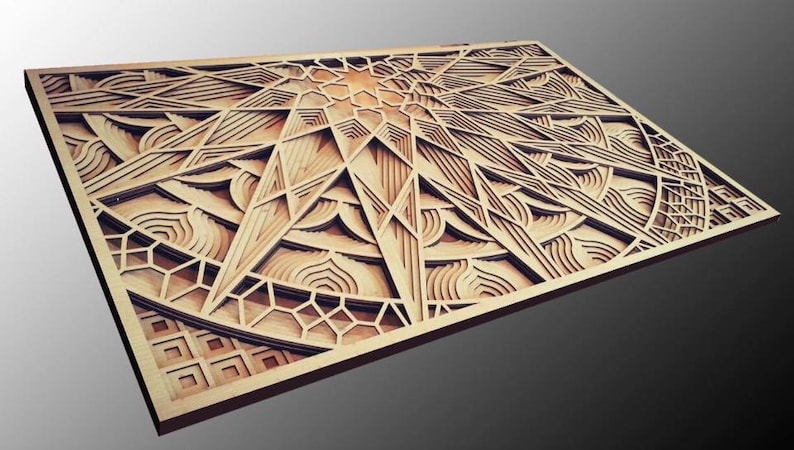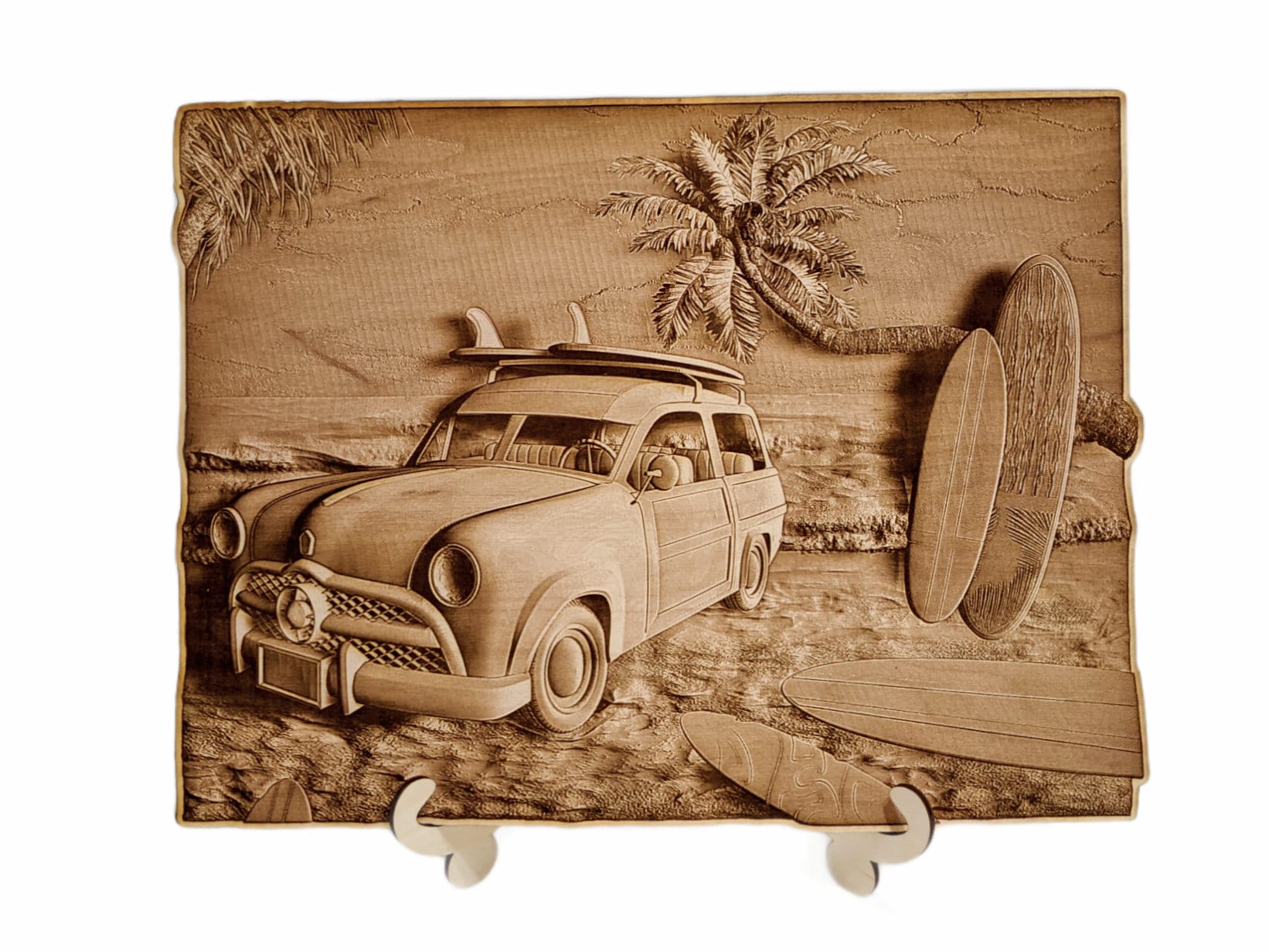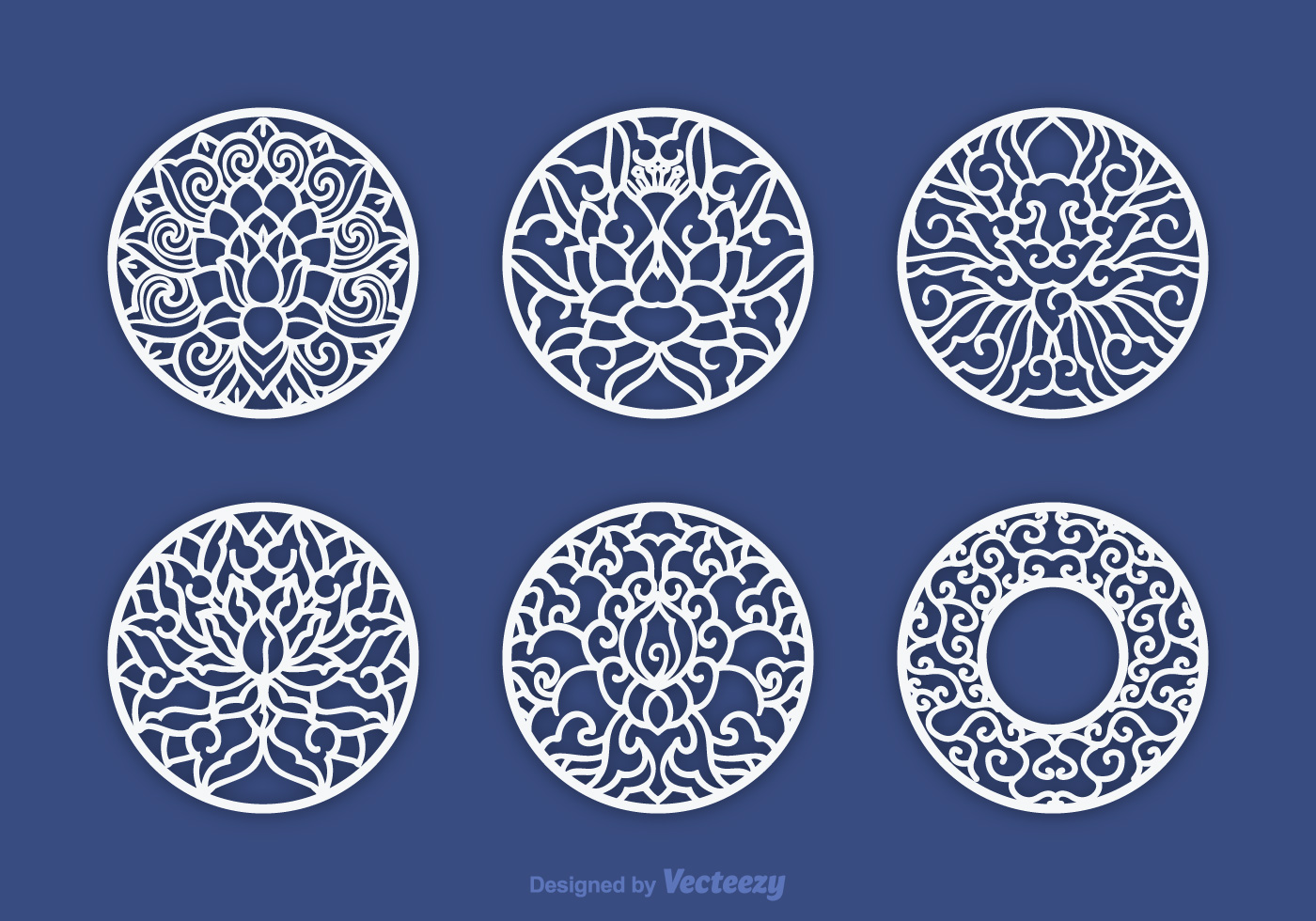
Sanding the Laser Cut Partsįrom the images, you can see that there are burn marks on the wood after laser cutting.
#LASER CUT ART FILES DOWNLOAD#
I corrected this error in the design files, so if you download them you don’t have to worry about it.

I could have redrawn the files and cut the parts again on the laser, but I decided to go the low-tech way and just use a small chisel to make the cut-outs in the five parts. Here you can see one of the missing cut-outs. For this panel, all the pieces fit as planned. So for five of the distance holder legs, there was an overlap with the shoreline and they did not fit. When I designed the distance holders, I did not take into account the width of the back layer shore line pieces. At first, all looked fine and I was happy how nicely the acrylic and wooden parts meshed but it turned out I made a little mistake. I sorted the parts and lay them out on the floor. Test if Everything Fits… or NotĪfter cutting all the parts, I did a dry run to see if everything fit together as planned. I put big post-its on every piece to not mix anything up and double –checked everything before hitting that “cut” button. Cut the individual parts and then remove the paper.īe careful to have the right piece of wood aligned the right way before cutting. If you are using a saw for the cutting, I would recommend to print out the design on paper and glue the paper to the plywood using a non-permanent spray-on glue.

I cut all the parts on a laser cutter at my local maker space. Select both shapes and use Path > Union to combine them into one shape again.īelow you can download my final files for laser cutting. This will turn the outline of the duplicated shape into a new path. Next, I used the Path > Stroke to Path command. Kerf Adjustment With Inkscapeįor the kerf adjustment with Inkscape, I set the line weight to my kerf width (0.2 mm / 0.08 inch), then left-clicked and used Duplicate.

Mirroring the design makes it possible to flip it to the other side for assembling and this way the angled edges will cancel each other out. The kerf correction makes the design bigger to account for the material that will be cut away. I finally added a kerf correction of 0.2 mm (0.08 inch) and I mirrored the shape of the acrylic before cutting. You also have to consider that cutting with a laser produces a slightly angled cut. I did a few small test cuts to find out the best settings. I wanted the plywood and acrylic to fit together as closely as possible without a big visible gap.Ī laser cutter can cut fine detail but even with a laser, you have to account for the material that gets cut – or more accurately burned – away. Test Cutting and Final Design Adjustments I also decided to add a frame made from a second layer of plywood around each panel to give more stability to the wood. To achieve this, two u-shaped distance holders will be placed on the back of each panel. I wanted to give my panels a kind of floating look. Designing the Frame and D istance holderĪfter I was happy with the design of the front side, it was time to think about the support structure. This is mainly a design element but it will also help to hold the acrylic in place. The second layer will be placed behind the transparent acrylic, creating a kind of river shoreline.

To add a dimension of depth, I decided to work with two layers of plywood. My wall art will be made of three square panels measuring 285 x 285 mm (11.2 x 11.2 inch). Then you can cut them out to try if you like the look. If you prefer to work analog you could place transparent paper over the wood and use it to sketch different shapes. To do this I opened the picture in Inkscape and then draw different river shapes above the picture. Creating the Wall Art DesignĪfter I selected a sheet of plywood, I took a picture of the wood and then tried several design variations for the placement of the river. Also, look at both sides of the plywood because those can be completely different. Look at the grain and think where you could place your river. Tip: When you buy your plywood at a store, browse through several sheets. I wanted the natural grain of the wood to support the shape of the river. While for some projects visible knots or color variations in the plywood might be undesired – for this project I was actively looking for wood with some character.


 0 kommentar(er)
0 kommentar(er)
